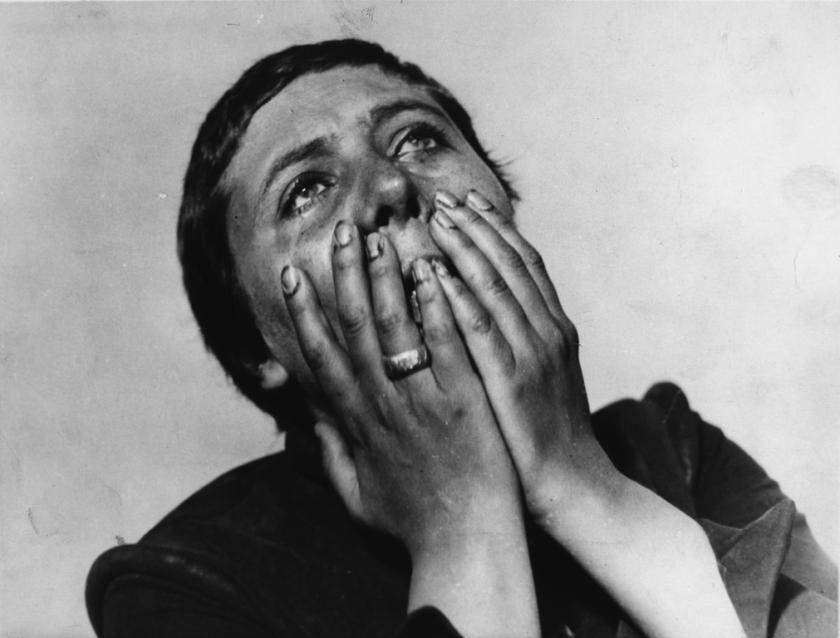Wells Cathedral, masterpiece of Gothic architecture, is distinguished by relatively intimate scale: a perfect place to present Carl Dreyer’s 1928 classic and visually arresting account of the trial and burning of Joan of Arc. The screen was hung in front of the massive “St Andrew’s Cross”, the almost modernist bracing arches – a backdrop of immense presence that complemented the compellingly architectural look of the film.
The event was presented by Hauser and Wirth, the London gallery who extended their activities to Somerset a couple of years ago. In some ways, an Anglican cathedral filled with the gigantic close-ups of the maid of Orleans, tormented by a band of misogynist clerics, felt like a brilliant piece of installation art: raising very contemporary questions about faith, the validity of the personal revelation, the almost totalitarian power of religious institutions and men’s need to keep women in their place, and their right to wear clothing of their choice.
The relevance of Dreyer’s passionate film was underlined by a live soundtrack (composed by Adrian Utley of Portishead and Will Gregory of Goldfrapp). that avoided medieval references and yet felt totally appropriate in the way it mixed a very dramatic and richly textured evocation of Joan’s spiritual travails with tons of rock’n’roll attitude. This was at times a very noisy score, almost over-filling the body of the church, and losing the richness of the space’s exquisite and mysterious acoustic through the over-amplification of voices and percussion.
But Dreyer’s fierce expressionism demands a kind of excess, as the camera angles, use of big close-up on faces and sometimes startling fast-cutting express the violence which keeps bursting forth from the assembled priests and judges in the face of the young woman’s deep commitment and faith. From the start, Dreyer’s sublimely long tracking-shot is accompanied by a deep bass pulse, later joined by the other instruments – electric guitars, keyboard, a harp. brass instruments, percussion and the whispers of an eight-voice choir. The overall style, maximising the almost trance-like use of repeated motifs, comes close to minimalism, but when needed the music rises in climaxes that owe as much to the tradition of Bernard Herrmann as the mesmerising loops of Terry Riley.
There is much gorgeous use of various harps (played by Ruth Wall), with delicate cascades of notes evoking at times the delicacy of Joan’s spirit and at others the more ominous twists and turns of the plot, as the men around her totter between absolutist power-mania and recurring doubt. Will Gregory contributes some heart-rending solos on soprano sax and a Chinese double reed instrument reminiscent in sound and texture to the Armenian duduk. In the scene where Jean Massieu the Dean of Rouen – a charismatic performance by a young Antonin Artaud – tells Joan that in admitting she has lied to avoid the stake, she must be burned alive, the music builds inexorably in a series of waves that mirror the images of the young woman’s agony and the priest’s compassion and frustration admirably.
When the soundtrack, originally commissioned by Watershed Media Centre and the Colston Hall, was premiered in Bristol in 2010, there were moments when there was a disjuncture between the music and the film. Utley and Gregory had achieved a dramatic quality that matched Dreyer’s style, but sound and image didn’t always achieve emotional synchrony. This time around, after many performances around the world and some significant re-writing, the soundtrack feels as classic in its way as the film, resonating with the passions on screen, at times working admirably well against the drama and at others underscoring it with great power. The conductor, Charles Hazlewood, who has been involved the project from the start, maintains a rigour that was absent back in 2010. The music achieves real brilliance in a series of explosions during the final section of the film, as the sheer brutality of Joan’s agony in the flames - unforgettable images from Dreyer’s imagination - is accompanied by music that renders those moments almost unbearable to watch.
And then, at the very end, there is a return of the sense that Hauser and Wirth may have, perhaps not entirely consciously, presented us with a fine art installation full of contemporary relevance, and not just in terms of a fight between a woman of faith and men of power: the final onscreen title in Dreyer’s film reminds us rhapsodically that Joan of Arc has, ever since her martyrdom, embodied the spirit of France. It was hard not to remember how she has been adopted by the French right, not least the National Front, as the saviour of France – and as an icon for the bastion of racial purity that Marine Le Pen and her disreputable cohort so vehemently aspire to.















Add comment